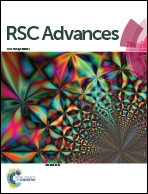Preparation, characterization and bioavailability of oral puerarin nanoparticles by emulsion solvent evaporation method
Abstract
To improve the water solubility and dissolution rate, puerarin (PUE) was nanocrystallized by an emulsion solvent evaporation (ESE) method, followed by freeze-drying. The optimized conditions of the preparation process were obtained by a single-factor method. Under the optimum conditions, PUE nanoemulsion with mean particle size (MPS) of 185.2 ± 39.8 nm and polydispersity index value (PI) of 0.005 was prepared. PUE nanosuspension with an MPS of 67.9 nm (PI = 0.280) was obtained after removing the solvent by rotary evaporation. Puerarin nanoparticles (PUENs) with an MPS of 132.6 nm (PI = 0.173) and zeta potential of 23.60 ± 2.55 mV were successfully prepared via further freeze-drying. PUENs were characterized by SEM, TEM, FTIR, XRD, DSC, TGA, equilibrium solubility, dissolution rate, oral bioavailability, hemorheology, cytotoxicity and solvent residue analysis. These results showed PUENs had a smaller particle size than raw PUE, and were changed into an amorphous structure from the crystal structure of raw PUE. The solubility and dissolution rate of PUENs were significantly improved in simulated gastric fluid (SGF), simulated intestinal fluid (SIF) and deionized water compared with raw PUE. The oral bioavailability of PUENs was 2.83 times that of raw PUE. PUENs improved hemorheology and did not enhance the cytotoxicity toward normal cells. The residual amounts of ethyl acetate and ethanol were separately less than the ICH limit for class III solvents. According to the results above, PUENs show the potential application value of its oral absorption.



 Please wait while we load your content...
Please wait while we load your content...